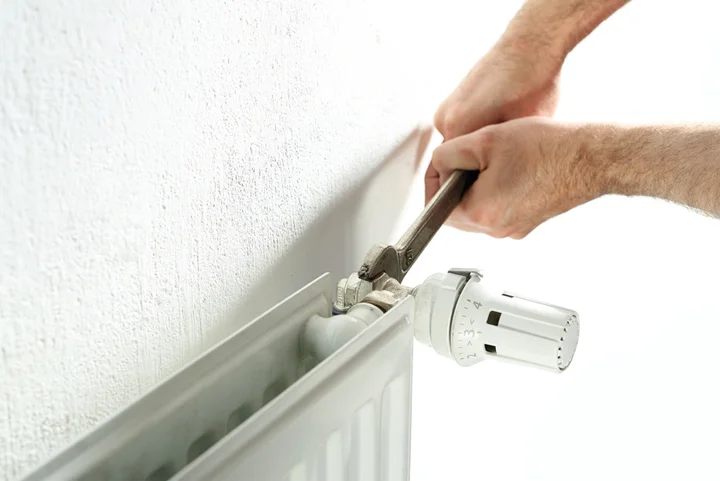How to regulate radiators?
Careful control of radiator heating is key to achieving the desired thermal comfort and savings. The easiest way to do it is to install thermostats on radiators and adjust their operation. Radiators must be in working order for the system to work effectively. If some of your radiators are very hot while others are lukewarm, and you have ruled out an airlock, it might indicate that the presetting is not correct. In order to properly set the amount of water flowing into the radiators, it is necessary to balance the heating system.
How to balance your radiators
One of the activities that should be performed by every heating system fitter is to regulate the water flow in the radiators through appropriate settings. This is due to the fact that water usually takes the path of least resistance and then returns to the CH boiler. The improper water flow in the heating system or, in other words, hydraulic imbalance results in too high or too low room temperature.
In order to prevent such a situation, it is necessary to balance the radiators. It involves ensuring an even distribution of hot water in radiators, which are different distances from the heat source.
In the 90s, balancing radiators involved placing a washer with a small hole between the valve and the radiator, which made the water in the radiator flow much more slowly. Later the washers were replaced with thermostatic valves, which also offer balancing function - presetting.
How to modify the presetting values of the radiator valves
As mentioned above, settings are used to suppress the water flow in one place and increase its intensity in another. In order to do it, make adjustments by removing the protective cap or head from the valve.
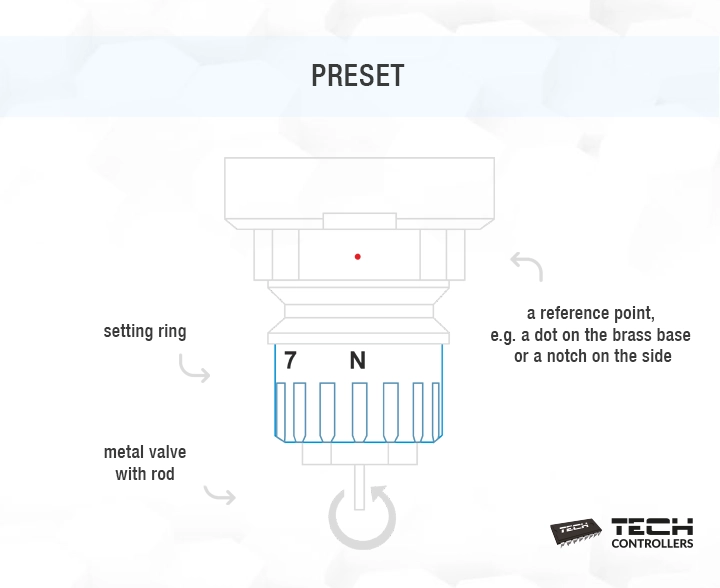
Initial balancing of the radiator involves turning the ring, which limits the maximum extension of the rod. To balance radiators, raise the setting ring, turn it to the place where the setting value is opposite the reference point, and then release the ring.
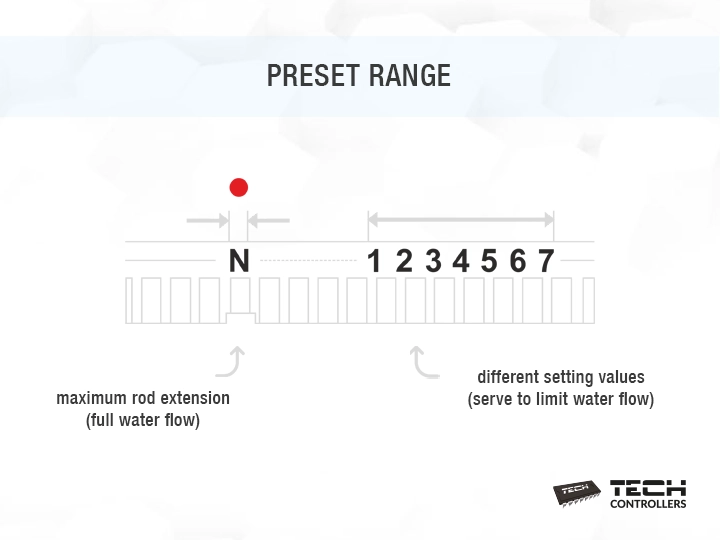
The smallest extension of the rod is equivalent to the smallest water flow. As a result, the higher the set value is, the more slowly the water will flow through the valve, even if it is fully open.
After balancing, closing and opening the valve is performed as before, but we do not achieve full opening any more. In practice, the regulation of water flow in radiators usually involves experimental reduction of water flow in the warmest radiators. As a result, more water goes to the ones which were the coldest.
Modern radiator thermostats
Balancing is very helpful if one or more heaters do not heat up properly. However, it is just the beginning of what we can do to control our radiators. Radiator controllers offer the widest range of possibilities enabling the user to control the thermostats in such a way as to maintain optimum temperature in every room.
The radiator room thermostat has become a convenient and functional device due to technological progress. Innovative solutions are based on the electronics in the valve itself and can be centrally controlled by means of radio signal from a separate device. Wireless radiator controllers are solutions which tempt you with savings offering the possibility to adjust the temperature to individual needs.
Wireless electric actuators STT-868 are devices intended to be fitted on radiators. They enable simple and effective temperature management in particular zones.
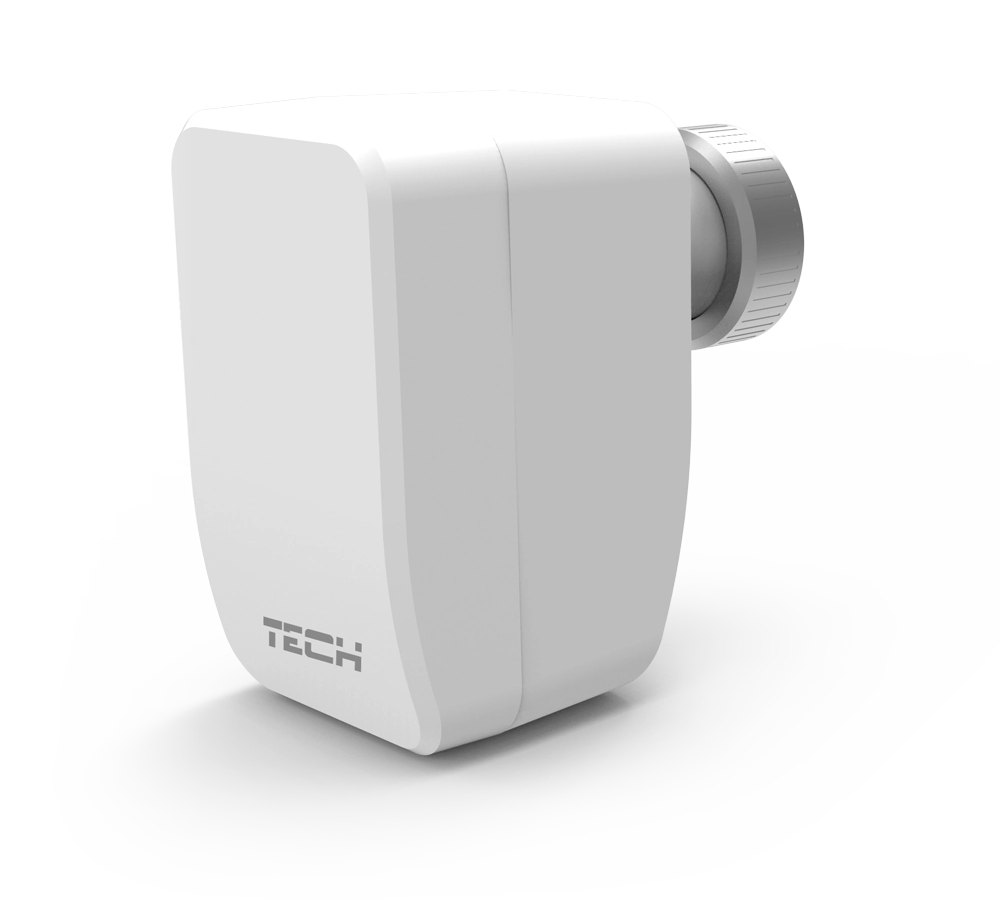
Room thermostats are very easy to install. Just screw them to the radiator head, remove the cover and insert batteries. After the actuator has been installed properly, the valve will calibrate automatically.
The radiator room thermostat is controlled by a system that promotes energy savings and maintains high thermal comfort. The device is compatible with mounting strips for WiFi 8S, EU-8S, L8 thermostatic valves and the EU-2807 regulator.
WiFi 8S and EU-8S - convenient control of electric actuators
Devices such as WiFi 8S and EU-8S allow you to maintain constant temperature in up to 8 heating zones.
The WiFi 8S wireless radiator controller determines the need to heat up the zone based on its current temperature. The device can manage up to 8 different zones with the use of a built-in temperature sensor, one wired C-7 p sensor and additionally 6 wireless C-8 r sensors or room controllers R-8 b and R-8 z. The WiFi 8S controller has a built-in Internet module. Once the Internet connection has been configured, the thermostat can be controlled via the Internet. All you need to do is register your emodul.eu account beforehand.
The EU-8S is a wireless room regulator intended for controlling actuators. It has a 2 mm front panel made of glass, a large, easy-to-read colour display and a built-in temperature sensor. The EU-8S is a master room regulator. In other words, regardless of the type of regulator or room sensor used, it allows you to edit the parameters of particular zones.
Both WiFi 8S and EU-8S enable the user to control the radiator thermostat quickly and efficiently. Below you will find various possibilities of temperature changes offered by these two devices.
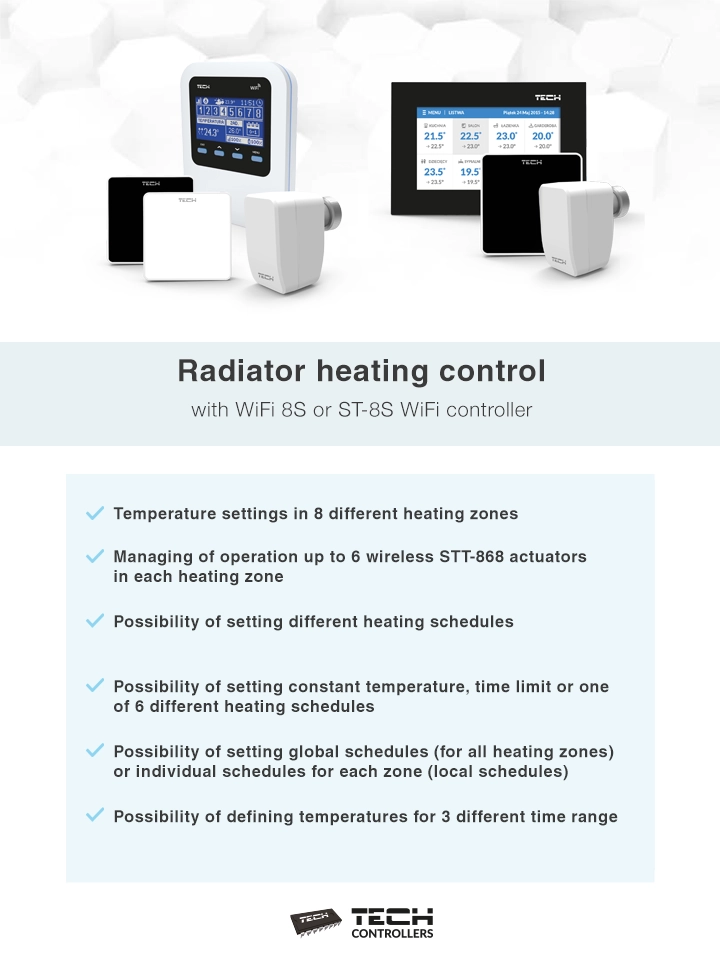
In order to manage the radiator actuators effectively with the use of the WiFi 8S or the EU-8S controllers, it is necessary to conduct registration in the controller, followed by configuration of operation parameters.
In the case of WiFi 8S, after installing the thermoelectric actuator and its calibration, select the number of the zone in which a given radiator thermostat is to be registered, and then select the option: Actuators / Registration. The registration button on the controller must be pressed within 120 seconds of selecting the Registration option. In the case of EU-8S, synchronization is initiated by activating the Registration function in the EU-8S controller menu.
The operation of thermostatic actuators can be programmed in the menu of both controllers. SIGMA function allows smooth control of the thermostatic valve. The user may also set the minimum and maximum valve closing - it means that the degree of valve opening and closing will never exceed the pre-set values. In addition, the user can adjust the range that determines the room temperature at which the valve will start to close and open.
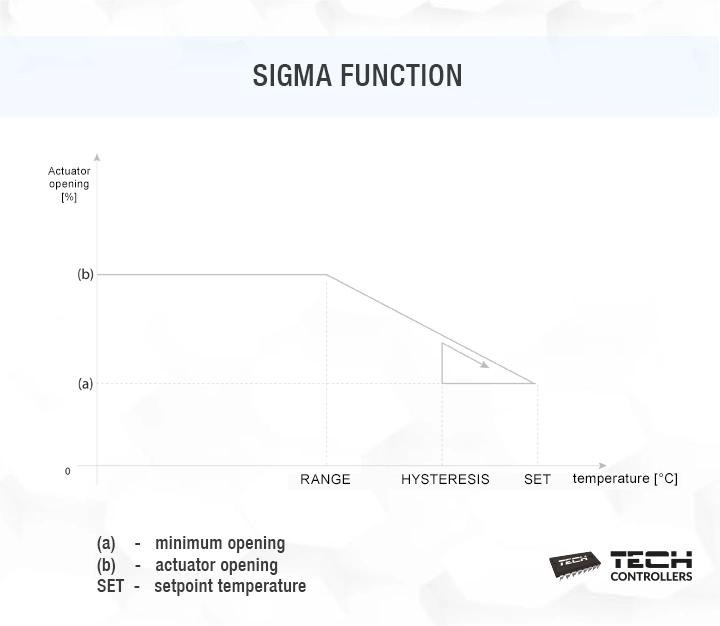
Heaters can be optimally balanced
The effects of staying in both too cold and overheated rooms include general discomfort as well as frequent colds. The best solution to this problem is to regulate the water flow in the radiators properly. If we notice differences in the temperature of particular radiators, it might be caused by hydraulic resistance. Presetting the radiators is not a difficult task and you can do it yourself. Real control of radiator heating begins when we install modern radiator thermostats.To maintain full comfort, the radiator thermostats must be controlled my means of intelligent devices. Controlling radiators via the Internet is very simple and convenient. While making adjustments, it is worth remembering that the optimum temperature varies depending on the purpose of the room.
